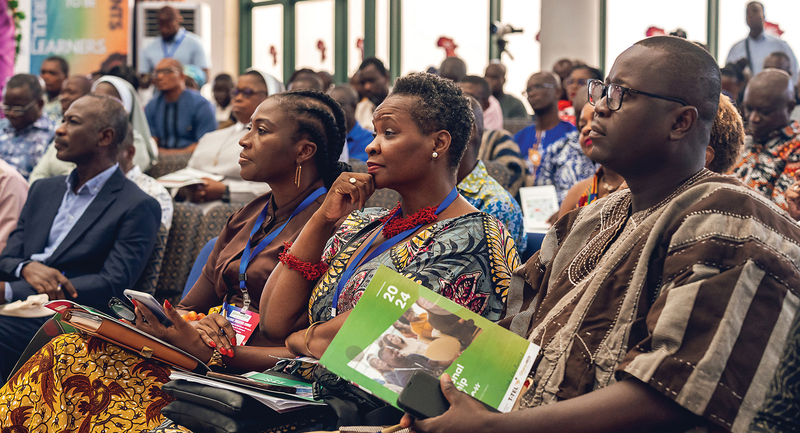Educators begin this new school year facing challenges they have never before encountered. Amid political struggles involving vaccinations and mask requirements, they must help students readjust to school after a year and a half of pandemic-driven disruption that deeply affected their learning, home lives, and mental health, as well as the lives and well-being of their teachers. In addition, educators must do this in realities still complicated by the pandemic involving social distancing, cleaning requirements, and hybrid models of instruction. School leaders can take important steps in these troubled times to help teachers get off to a good start and ensure that students look forward to being in school.
Don’t Look Back; Look Ahead!
Instead of looking back to identify all the things students might have missed during the past 18 months, teachers must be encouraged to look ahead to determine the prerequisite knowledge and skills students must have to be successful in learning units over the first weeks. Fourth grade teachers, for example, don’t need to consider everything that students may have missed in the 3rd grade curriculum. Instead, they need to identify the two or three concepts or skills from 3rd grade that they plan to build on and extend in beginning 4th grade learning units. Then, they need to take a day or two to teach students these concepts and skills to a mastery level, ensuring that all students have learned them well.
This will allow all students to begin the school year on a level playing field, prepared to learn the new concepts and skills that are part of this year’s curriculum. It will help address the inequities that affected students’ past performance. Most importantly, it will ensure students begin the school year ready to learn rather than having to dig themselves out of the hole of indeterminate learning “deficits.”
Because learning these early units well provides students with the basic skills they will need for later units, the extra time taken to teach these prerequisites to mastery will be easy for teachers to recover later in the school year. Although we cannot make up for everything students missed during the past year and a half, we can take small but important steps to provide students with a solid foundation going into this year.
Begin with Success
The first two weeks of the school year are a critically important time for students and teachers alike. When students return to school after a summer break, their perceptions about school and about themselves as learners are typically in flux. The new year brings new teachers, new books, new classes, new schedules, and new friends. Even though many remnants of the pandemic remain, all of these changes come with the hope that this year will be different and better than previous years.
That flexibility in students’ perceptions continues only until teachers administer the first quizzes and assessments, around the end of the second week of school. The scores students receive on those first quizzes put them into categories—and getting out of a category is tough. Students who attain a mediocre score on that first math quiz, for example, begin to see themselves as C students and their hopes and expectations for success diminish. They begin to accept the likelihood that they will earn C’s for the rest of the school year. But if they succeed on that first quiz, that is their expectation for all that might follow.
This means teachers must do everything they can to ensure students’ success during these first few weeks on something meaningful and challenging. It’s not completing a word-search puzzle that anyone could solve with little effort. Rather, it’s success in developing a new skill, gaining new insight, or solving a complex problem. It must be an achievement that makes students feel confident in their abilities as learners.
Although successful learning experiences during these first two weeks of school do not guarantee success for the entire school year, they are a powerful and essential step in that direction for students and teachers alike.
A
For example, a middle school teacher I know begins an early mathematics unit by giving students a list of 10 large numbers and allowing them just two minutes to determine which of the numbers are evenly divisible by three. After two minutes, students determine the answer to only three or four of the numbers. No one succeeds at the task. The teacher then explains that there is an easy trick: Simply add the digits. If the sum of the digits is a multiple of three, then the number is evenly divisible by three. So, for 1032, 1+0+3+2=6. Since 6 is a multiple of 3, 1032 is evenly divisible by 3. Now, in just two minutes, every student receives a perfect score. The teacher then explains that mathematicians call these tricks “strategies,” and that success in math simply requires knowing the strategies. In the next class, she promises to teach them more tricks. Students leave looking forward to the next day.
This dynamic of early success is the reason engagement and attendance problems rarely occur during the first two weeks of the school year. Those problems generally begin to occur after the first scored quizzes, papers, or assessments. In students’ minds, the scores and grades they receive on these first quizzes and assessments establish their likelihood of future success. Why come to school if there is so little chance of doing well?
The key to motivating students rests with that early success. Students need to see that their efforts make a difference, that they can be successful learners, and that they can gain positive benefits from that success. Students persist in activities at which they experience success, and they avoid activities at which they are not successful or believe they cannot be successful.
Teachers Need Success, Too
Just as success is arguably one of the most powerful motivational devices for students, it is for teachers as well. Teachers recently experienced the most trying 18 months of their education careers. They fought to help their students learn under unanticipated and exceedingly difficult conditions. They watched their students struggle in situations they could not alter. As a result, many of them begin this new school year feeling stressed, mentally fatigued, and emotionally exhausted. What they need now, more than ever, are strategies and tools to help them succeed immediately with their students. Teachers gauge their success largely in terms of the learning success they see in their students.
This means that school leaders must plan professional learning opportunities for teachers that provide them with specific strategies and tools to gain that vital early-learning success with their students. Especially during these difficult times, school leaders cannot afford to be seduced by the opinions of persuasive consultants or drawn to topics currently trending on Twitter or in blog posts. Instead, they need to plan professional learning experiences that focus on evidence-based practices. Before committing to any new idea, they must ask questions like, “How will this help our students?” “How will we know?” and “How soon should we see results?” In particular, school leaders must ensure the strategies and tools presented to teachers have been thoroughly tested and are backed by solid research evidence showing the effect on student learning in contexts similar to their own.
Timing Is Crucial
Schools face enormous challenges as they approach this next school year—and they don’t have much time to get ready. Efforts in these first two weeks must be thoughtful, efficient, and designed to yield the greatest benefits possible for all students. Although successful learning experiences during these first two weeks of school do not guarantee success for the entire school year, they are a powerful and essential step in that direction for students and teachers alike. Providing teachers with the strategies and tools they need to bring about that early success could make all the difference at this very crucial time.









